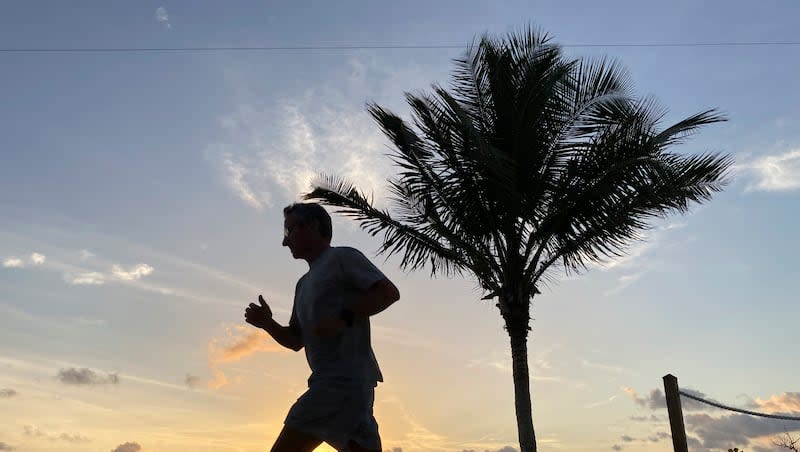Trouble nodding off? Try regular exercise to cure insomnia

Folks who are “persistently active” have less trouble falling asleep and enjoy higher-quality sleep, according to new research published in the journal BMJ Open. Insomnia, sleep time and daytime sleepiness were all improved with at least an hour a week of physical activity.
In a study that included 4,339 participants in nine European countries, the researchers found that people who got at least an hour of exercise a week were 42% less likely to struggle with falling asleep, 22% less likely to have any insomnia symptoms and 40% less likely to have more than one symptom. Plus, they were 55% more likely to get six to nine hours of sleep consistently.
The researchers also found that those who had not been active but began to exercise during the study period were 21% more likely to improve their sleep, compared to those who kept their couch potato, inactive lifestyle.
As Newsweek reported, “Insomnia is the most common sleep disorder in the United States, affecting roughly 1 in 3 Americans, according to the University of Missouri. This is a significant public health concern as sleep is essential for our mental and physical well-being, and not getting enough has been shown to contribute to heart disease, obesity, neurodegenerative disorders and depression.”
Use it or lose it
Participants were part of the European Community Respiratory Health Survey, the sleep data collected during its 10-year follow-up wave. “Participants who reported that they exercised with a frequency of at least two or more times a week for one hour/week or more were classified as being physically active,” per the study. “Changes in activity status were categorized into four groups: persistently non-active, became inactive, became active and persistently active.”
The findings held true after adjusting for sex, age, smoking history and body mass index.
“We also found that persistently active participants were more often men, were younger, had a slightly lower BMI and were less likely to be current smokers and more likely to be currently working,” per the study.
“Our results are in line with previous studies that have shown the beneficial effect of exercise on symptoms of insomnia, but the current study additionally shows the importance of consistency in exercising over time, because the association was lost for initially active subjects who became inactive,” the researchers wrote.
In other words, exercise has to be kept up to maintain the benefits.
“Physical activity has a huge role to play in our physical and mental health, with benefits such as better sleep, reduced stress and anxiety, and improved productivity, social connection and well-being,” Huw Edwards, CEO of Ukactive, a trade group for the United Kingdom’s physical activity sector, told The Independent. “This study shows the essential role that physical activity can play in our physical and mental health, with benefits such as better sleep, reduced stress and anxiety, and improved productivity, social connection and well-being.”
The Independent noted the finding that “people in Norway were most likely to be persistently active while those in Spain, followed by Estonia, were most likely to be continually inactive.”
The authors noted both strengths and limitations to the study. The longitudinal design let them measure activity level 10 years before they looked at sleep outcomes, so they could see if consistency of the exercise impacted sleep and sleepiness. But they wrote that since the sleep variable was only checked later, they couldn’t see if it impacted the initial physical activity. They also noted that sleep was self-reported; they didn’t have any sleep disorder diagnoses to consider.

